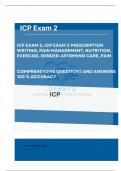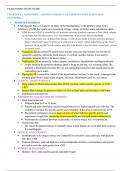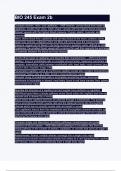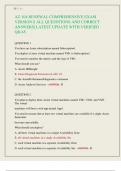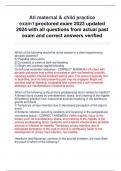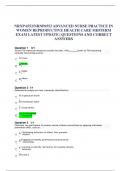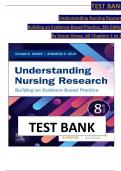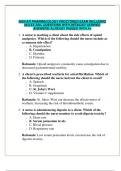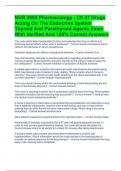Exam (elaborations)
ICP EXAM 2, ICP Exam 2 Prescription Writing, Pain Management, Nutrition, Exercise, Gender Affirming Care, Pain Questions and Answers|Updated 2024
- Institution
- University Of Texas - Arlington
ICP EXAM 2, ICP Exam 2 Prescription Writing, Pain Management, Nutrition, Exercise, Gender Affirming Care, Pain|What is Interstitial Lung Disease (ILD)?, ILD arises from identified cause or idiopathic, what are some classifications of ILD? Connective Tissue Diseases, some ILDs are more common in wom...
[Show more]
